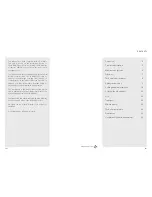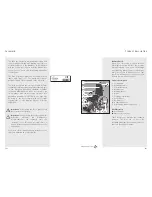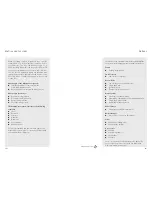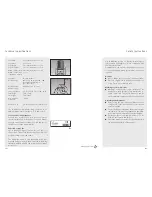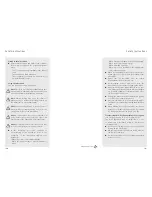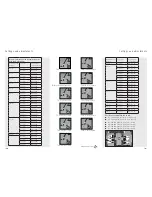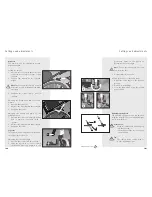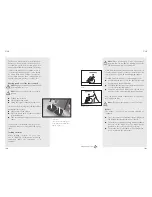
EN30
EN31
Taxibus
The Roxx has been successfully tested by TNO to
be a “crashtest safe” wheelchair, in accordance with
ISO 7176-19. It can therefore be transported with the
occupant in it in a taxibus (see also the sticker on the
wheelchair).
However, whether the wheelchair occupant can be
safely transported depends on the state of his or
her health; the user’s physician should be consulted.
Life & Mobility recommends transferring the occupant
from the Roxx into a fixed seat if possible.
n
The Roxx has been tested, with the test dummy (75
kg) fixed in position using a 3-point safety belt. The
suitability of the Roxx in crashes other than those
specified in the above standard has not been tested.
n
The Roxx was tested in various configurations.
n
Life & Mobility recommends that the chair should
always be fitted with a Matrixx headrest.
n
For preventive safety reasons, Life & Mobility installs,
ex factory, a headrest adapter on the backrest.
n
The Roxx must be fastened to the floor of the taxibus
using an approved* four-point securing system.
Note:
If there is no ex factory crashtest safe sticker
on the wheelchair, it is not a wheelchair that can be
transported safely with the occupant in it.
Note:
Only lift the wheelchair using fixed frame
components and not removable accessories such
as armrests, legrests seating, back support etc.
Note:
The Roxx is only crashtest safe in
combination with the original Matrixx elements
and parts.
* In accordance with EN10542
n
The positions of the four securing points on the
Roxx are shown with a hook symbol sticker (see
Figure 1).
n
The Roxx must be transported with the occupant
facing forward. The wheelchair must be secured
in accordance with the instructions of the
manufacturer of the securing system.
n
The Roxx must be secured using anchoring
systems that are suitable for the hook eyes (see
Figure 2).
n
The wheelchair occupant must wear an approved*
three-point safety belt in the taxibus. These safety
belts must be attached to the taxibus.
n
The lap belt must be positioned low across the
occupant’s waist. The angle between the belt and
the floor must be between 30° and 75° (a larger
angle is better) (see Figure 3).
n
The lap belt must run over the front of the body
following the line where the hip and the pelvis
meet. The belt must closely follow the body here.
The top belt must fully support the occupant as
illustrated in Figure 4.
n
The diagonal belt must be positioned across
the occupant’s shoulder and chest as shown in
Figure 5.
n
The belt must be sufficiently tight but should not
cause the occupant discomfort.
n
The belt must not be twisted.
1
2
55˚
Figure 4
Figure 5
Figure 3
Figure 2
Figure 1
Transport
Transport

